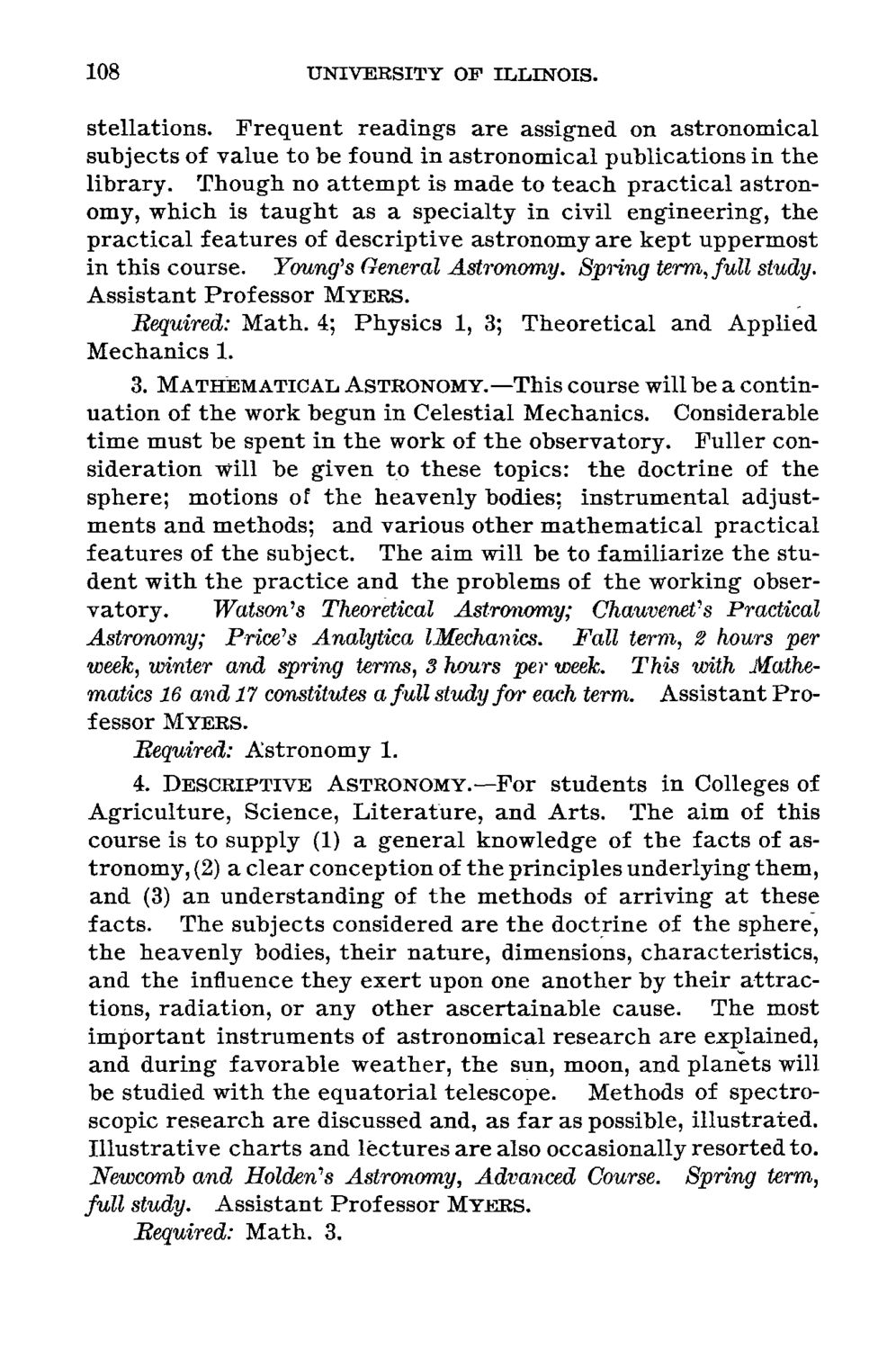| |
| |
Caption: Course Catalog - 1894-1895
This is a reduced-resolution page image for fast online browsing.

EXTRACTED TEXT FROM PAGE:
108 UNIVERSITY OF ILLINOIS. stellations. Frequent readings are assigned on astronomical subjects of value to be found in astronomical publications in the library. Though no attempt is made to teach practical astronomy, which is taught as a specialty in civil engineering, the practical features of descriptive astronomy are kept uppermost in this course. Young's General Astronomy. Spring term, full study. Assistant Professor MYERS. Required: Math. 4; Physics 1, 3; Theoretical and Applied Mechanics 1. 3. MATHEMATICAL ASTRONOMY.—This course will be a continuation of the work begun in Celestial Mechanics. Considerable time must be spent in the work of the observatory. Fuller consideration will be given to these topics: the doctrine of the sphere; motions of the heavenly bodies: instrumental adjustments and methods; and various other mathematical practical features of the subject. The aim will be to familiarize the student with the practice and the problems of the working observatory. Watson's Theoretical Astronomy; Chauvenefs Practical Astronomy; Price's Analytica IMechanics. Fall term, 2 hours per week, winter and spring terms, 3 hours per week. This with Mathematics 16 and 17 constitutes a full study for each term. Assistant Professor MYERS. Required: Astronomy 1. 4. DESCRIPTIVE ASTRONOMY.—For students in Colleges of Agriculture, Science, Literature, and Arts. The aim of this course is to supply (1) a general knowledge of the facts of astronomy, (2) a clear conception of the principles underlying them, and (3) an understanding of the methods of arriving at these facts. The subjects considered are the doctrine of the sphere, the heavenly bodies, their nature, dimensions, characteristics, and the influence they exert upon one another by their attractions, radiation, or any other ascertainable cause. The most important instruments of astronomical research are explained, and during favorable weather, the sun, moon, and planets will be studied with the equatorial telescope. Methods of spectroscopic research are discussed and, as far as possible, illustrated. Illustrative charts and lectures are also occasionally resorted to. Newcomb and Holders Astronomy, Advanced Course. Spring term, full study. Assistant Professor MYERS. Required: Math. 3.
| |